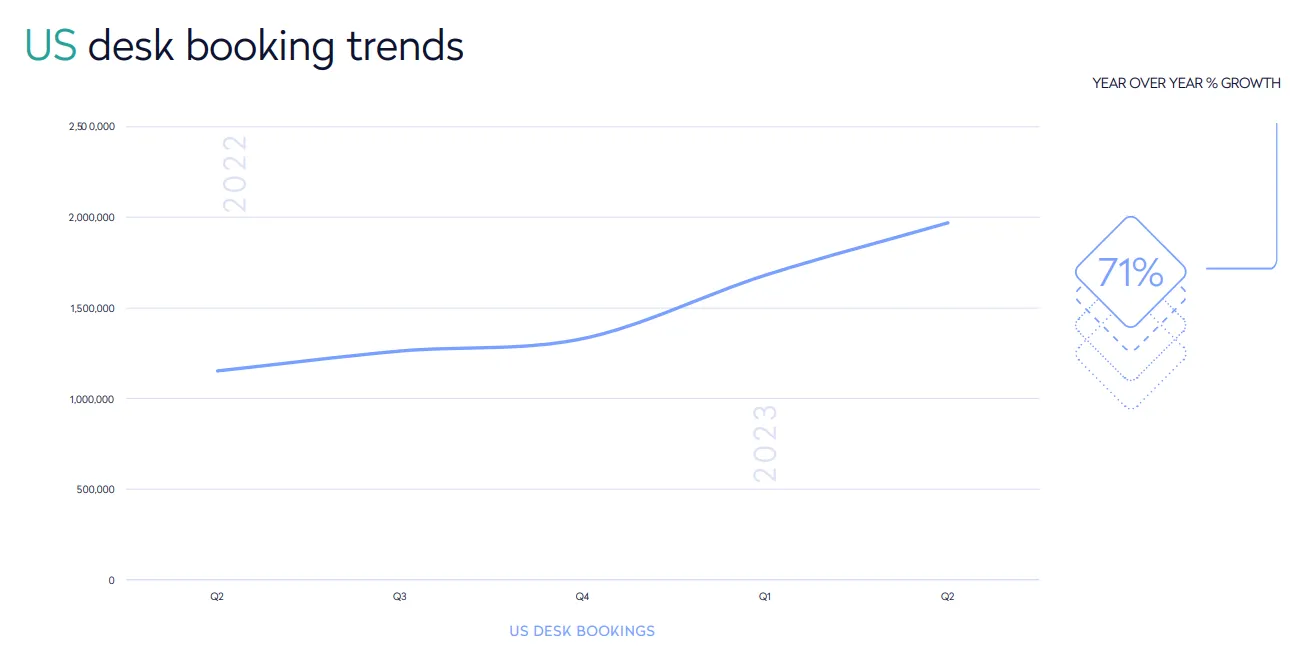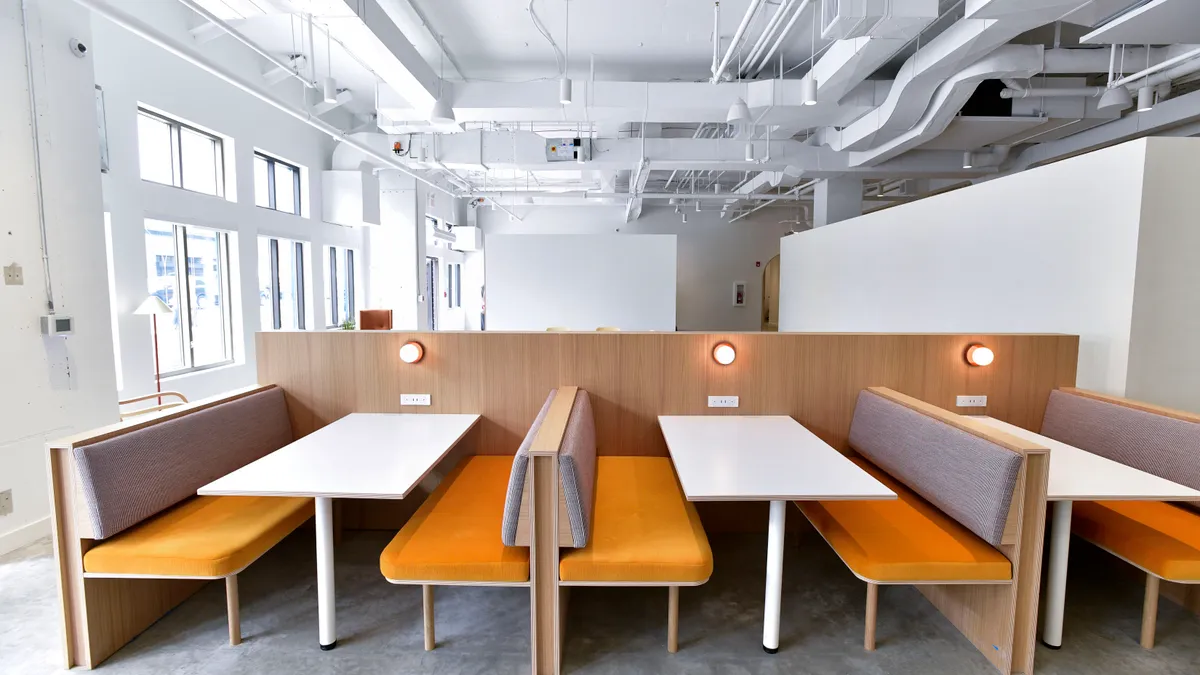Dive Brief:
- A growing desire for workplace connection and collaboration is driving more employees to return to the office, according to research shared by Eptura which points to significant increases in desk and meeting room reservations.
- The workplace technology company’s customer data shows a 71% increase in desk bookings from the second quarter of 2022 to that period in 2023 , year over year, across the U.S. From last fall through the second quarter of 2023, these bookings rose 56%.
- Most employees choose to come into the office on Tuesdays, Wednesdays and Thursdays, the report states, noting that using Mondays and Fridays for maintenance or servicing could help cut carbon emissions.
Dive Insight:
The upward trend in U.S. desk bookings is based on Eptura’s analysis of 7.4 million desk bookings made with the firm’s software across 3,800 office locations. These workspace reservations were mostly made by a mix of midsize and enterprise businesses. Primary users who booked desks through Eptura's software included management executives and heads of facilities management, space planning, workplace experience and corporate real estate, said Erin Sevitz, vice president of content at Eptura.

As part of its second-quarter workplace index survey, Eptura separately polled about 6,700 employees from six countries and drew on an analysis on 2.7 million desks, 37,000 buildings and about 440,000 floors across more than 8,000 companies.
Those survey findings show an 84% year-over-year increase in desk bookings and a 48% climb in meeting room bookings across the Americas during the second quarter. Eptura said the rise in meeting room bookings reflects the growing value of physical proximity to colleagues, with 47% of survey respondents citing a preference to be near their teams while in the office.
When it comes to who decides how often employees work from the office or other workplace, the largest proportion of respondents said organization policy mandates when they need to be in the office (35%), followed by 31% saying choosing when to work from the office is their decision and 25% saying their line manager makes that decision.
The findings also show that about one-third of employees across the Americas book desks the day before or the same day they go to the office. That results in complex planning for facilities managers, the report states, who must plan around “erratic demand for workspaces and variable occupancy rates” to support hybrid work cultures, as organizations seek to align employees’ desired work styles with how the modern workplace can best be utilized.
“The days of permanent one-to-one seating in office desks are gone,” Frederick Kraus, vice president of product at Eptura, said in an interview. “Facilities managers are faced with the challenge of striking a balance between the demand for space and the supply of space, as well as the types of spaces.” It’s also harder for facilities managers to calculate usage as people work across multiple spaces, including desks, couches, collaborative spaces and conference rooms, he noted.
These insights reinforce other signs of a trend of increased office traffic. A separate report from space management software company Robin revealed a 20% uptick in total desk bookings from January to June this year, with employees scheduled to come into the office for 2.6 days, on average, in May and June.
Kraus says reliable and appropriate data on occupancy is essential for facility managers to accommodate the need for space and assets in hybrid work settings. “Without good data, you can’t make good decisions,” he said.
A lack of such accurate and reliable data has been a key challenge for facilities managers of office buildings. Envoy, which partnered with Hanover Research to poll more than 1,100 company executives and workplace managers, found that 80% would have approached return-to-office strategies differently if they had access to accurate data.
Kraus pointed to the need for facilities managers to collaborate actively with HR. He suggested staggered department schedules to ensure a more balanced and consistent daily occupancy pattern, for example.
With more people coming into the office now than during the pandemic, HVAC systems, air filters, copiers, printers and other equipment may be more stressed than they were in the past three years, Kraus said. That also means more energy use and more emissions. On low-occupancy days like Fridays, facilities managers have the opportunity to strategically consolidate employees into specific hubs or spaces, leaving entire floors unoccupied. Turning off lights and systems on those floors can reduce energy consumption and maintenance expenses, he said.
Kraus suggests that facilities managers also work closely with finance teams to develop capital planning measures which factor in costs of upgrading older systems that use more energy than necessary.














